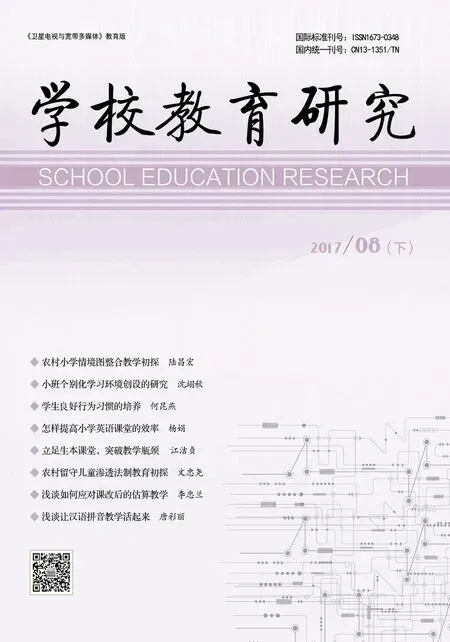六B《Great storybooks》教学设计
山西省长治师范附属友谊小学 李康婧
大家好,我的讲课题目是Great storybooks《名著》。
一、Teaching contents
《Great storybooks》Module 4 Unit10 of 6B. It includes two parts: Listen and say, Look and learn课文选自上海教育出版社,小学英语六年级下册第十单元,它是学生日常生活中感兴趣的话题之一。课文以阅读课的形式呈现,共分三大段,主要介绍《安徒生童话》《格林童话》《伊索寓言》这三大世界名著的内容以及它们的作者。
二、Teaching objectives
1.Aims on the knowledge:
T o e n a b l e t h e S s t o understand and speak: Andersen wrote the stories. He was a Danish writer. He wrote a lot of interesting fairy tales and stories. Children around the world enjoy reading his stories.
2.Aims on the abilities
(1) To develop the Ss’abilities of reading and speaking.
(2) To practice the Ss’ability of working in groups.
(3) To foster the Ss’abilities of communication and their innovation.
三、Key-points and difficult points
Key-points :
Ss’ can read and understand this text.通过《Andersen’s Fairy T a l e s》——《安徒生童话》、《Grimms’ Fairy Tales》——《格林童话》和《Aesop’s fables》——《伊索寓言》这三个童话故事,提高学生的阅读能力。
Difficult points : Make sure that they can use the sentences in real situations.
四、Teaching and learning methods
Let Ss take part in class,ask and answer in pairs and in groups. I’ll use communicative method, discussing method and seeing and hearing method to teach this lesson.
五、Teaching aids
In order to interest the students’ attention. I’ll use some cards, some pictures and multi-media as my teaching aids .
六、Teaching process
依据上面的教学思路,我将本节课分为以下五个环节:
这位学生有了这次美好的“受骗上当”的经历之后,由衷地发出了“童年的趣事多又多,童年的我们是那么单纯,总在不经意间上当,可是这些事却成了我们脑海里永恒的快乐回忆。小时候,最想长大,长大了,却发现童年最美好……”的感慨,可谓言表其心,水到渠成,毫无扭捏作态、无病呻吟之嫌。
第一环节:观看动画,导入新课。
首先播放视频,师生一起欣赏多媒体播放丑小鸭的故事,引出主题Great storybooks《名著》。
第二环节:主动探索,引入新知。
本环节我分四步。第一步,与学生自由交流
T:Did you read this story?T: Do you know who wrote this story? 请学生回答。
通过自由交流引导出作者Andersen以及他的作品。我会以同样的方法依次引出作者Grimm brothers以及Aesop和它的作品,并跟学生讲解他们不同的写作风格。
第二步,During the class,I will ask the students to follow me at least three times. Solve difficult worlds and then use the words into sentences. For example: the emperor’s new clothes和little Red Riding Hood ,其中“皇帝”emperor和“风帽”hood就是新词。我会按照em-per-or,h-oo-d进行反复领读来强化标准发音,再用在句子Do you remember the stories “The emperor’s new clothes”and“The ugly duckling”?中。
第三步,在学生初步了解作家以及作品的基础上,播放录音,让学生整体感受课文内容;在此基础上,再次播放录音,让学生尝试跟读,了解课文大意并划出有难度的句子或词组,师生共同攻克。如第二段中的Grimms’Fairy Tales、German writers,以及第三段中的Most stories in Aesop’s Fables are about animals.
第三环节:合作交流,语言交际。
在这一环节,学生四人为一组,进行交流活动。小组交流活动结束后,我会随机抽查几个小组,了解孩子们的交流情况。为此我设计了类似这样的问题:
T: What’s your favorite story?
S1: My favorite story is“The ugly duckling”.
T: Who wrote this story?
S1: Andersen.
第四环节:课外拓展。
为了拓展学生的知识面,我通过网络平台寻找到更多关于作者的详细信息。通过图片的形式,让学生详细了解作者以及他的其他作品。比如:安徒生的全称和他的其他作品,像the little mermaid《海的女儿》和The Little Match Girl《卖火柴的小女孩》。以及格林兄弟的其他作品The poor and the rich《穷人和富人》和The fisherman and his wife 《渔夫和他的妻子》等。
第五环节:作业布置。
课后作业,是为巩固学习效果而安排的作业,我就本节阅读课而言,将课后作业布置为:
七、Blackboard design
板书设计我采用了直铺式板书与归纳式板书的结合,既简洁明了、突出重点,又有利于提高学生的归纳能力。

